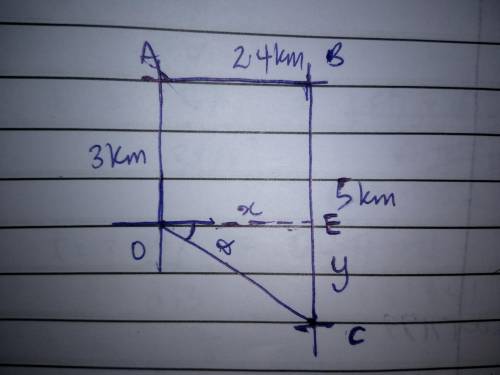
Physics, 30.03.2020 23:49 naomicervero
A person walks in the following pattern: 3.0 km north, then 2.4 km west, and finally 5.0 km south. (a) How far and (b) at what angle (measured counterclockwise from east) would a bird fly in a straight line from the same starting point to the same final point?

Answers: 1
Another question on Physics

Physics, 21.06.2019 23:30
Which lists the main components of darwin’s theory of evolution? a. random mutations drive evolution; the evolution of a population happens slowly; organisms have common ancestors; organisms do not change. b. natural selection drives evolution; the evolution of a population happens slowly; organisms have common ancestors; organisms change over time. c. natural selection drives evolution; the evolution of a population happens rapidly; organisms have common ancestors; organisms change over time. d. random mutations drive evolution; the evolution of a population happens rapidly; organisms have common ancestors; organisms do not change.
Answers: 1

Physics, 22.06.2019 05:20
Alfred pushes on a heavy box, but cannot move it. the box has a lot of inertia motion friction gravity
Answers: 1

Physics, 22.06.2019 10:00
Suppose a wheel with a tire mounted on it is rotating at the constant rate of 2.15 times a second. a tack is stuck in the tire at a distance of 0.373 m from the rotation axis. noting that for every rotation the tack travels one circumference (a) find the tack's tangential speed. (b) what is the tacks radial acceleration?
Answers: 2

Physics, 22.06.2019 10:00
During which interval are the persons represented by the graph not moving? a) 0 to 0.5 hrs b) 1.5 to 2 hrs c) 2 to 2.5 hrs d) 4.5 to 5 hrs
Answers: 1
You know the right answer?
A person walks in the following pattern: 3.0 km north, then 2.4 km west, and finally 5.0 km south. (...
Questions

















Mathematics, 24.06.2019 02:30






